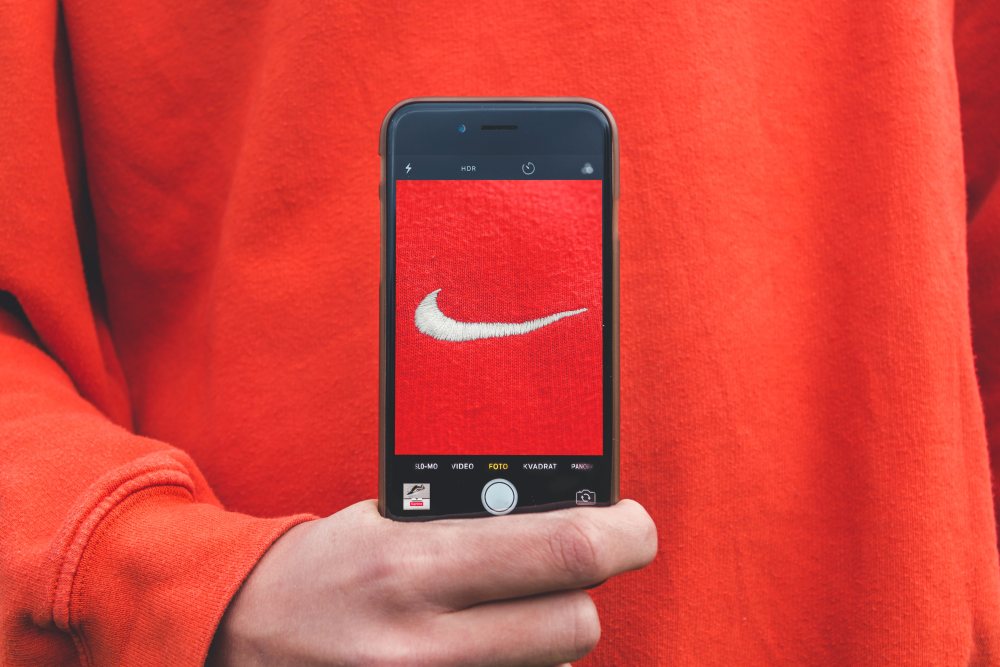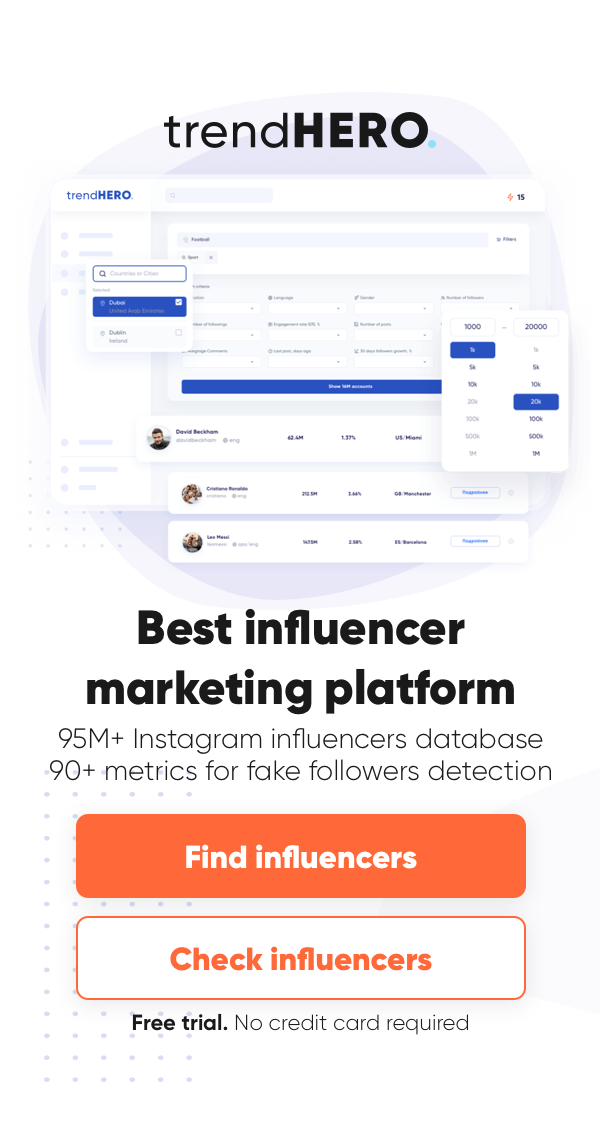It may sound like just another one of those overused marketing terms but brand awareness has a tangible impact on your business’ success.
Think about what comes to mind when you hear the slogans ‘Just do it’ and ‘I’m lovin’ it’. You immediately know we’re talking about Nikes and McDonald’s. Or when you see the trademark bitten apple, you know you’re looking at an Apple product.
There are many layers to a strong brand awareness campaign, including brand recall and familiarity, brand recognition, loyalty, and more.
What builds these elements in existing and potential customers’ minds are various factors including visual, linguistic, textual, and various other media and marketing forms. These help you design a brand identity so distinct that customers remember it easily and you remain at the top of their minds when they’re shopping for your product or service.
In this guide, we’ll answer the question ‘what is brand awareness?’ and why it matters. We’ll also look at the best ways to measure and increase brand awareness for better digital presence and marketing efforts.
What Is Brand Awareness?
Brand awareness is marketing speak for the level of recognition customers have of a brand’s name and product. In other words, it’s the number of people that have heard of your brand and know its name. This includes their perception of your brand identity and digital personality.
It also encompasses aspects of your brand that set you apart from your competition and show what value you bring to your customers.
Your brand may be seen as having high brand awareness if people see it as trendy or buzzworthy. However, this isn’t a foolproof way to define what brand awareness is. There also aren’t clear and curated metrics that can tell you how aware people are of your brand.
But, while brand awareness isn’t a cut-and-dry value, it does hold a lot of importance for businesses. We’ll explain why after distinguishing between brand awareness and brand recognition.

Brand Awareness Vs Brand Recognition And Brand Recall
The terms ‘brand recognition’ and ‘brand recall’ are often used interchangeably with ‘brand awareness. However, they are different concepts with different meanings.
Brand Recall
Brand recall is the level at which a customer is able to remember a brand with very little prompting. It’s the same as recognizing a brand but with more details intact: the type of product, price, when it was introduced, etc.
To put in another way, brand recall speaks to how much customers associate your brand with a category of products or services.
For example, if you were to ask a customer what comes to mind when they think about smartphones, the iPhone may be top of mind. This means they have a good recall of the Apple brand.
Brand Recognition
Brand recognition is the ability to recall the brand name without any details. It’s about assessing whether customers have even minimal knowledge of your company. This is according to visual elements like images, styling, colors, and your logo.
Textual choices and language also play a role in brand recognition, although a more secondary one. For example, everybody knows the distinct red, white, and swirling cursive of a Coca-Cola product.
Brand Awareness
Brand awareness goes beyond just recognizing a brand’s visual communication and your products or services. It’s about helping customers understand your brand values and what makes your products or services right for them so that they choose you over competitors.
Brand recognition and recall are just parts of the broader umbrella that is brand awareness. And so the best way to increase both brand recognition and recall is through brand awareness campaigns.

What Makes Brand Awareness Important?
Brand awareness plays a key role in your marketing and business campaigning. Efforts that increase brand awareness can benefit your organization in many ways. These are some of the reasons why it is important to build brand awareness.
It Encourages Purchasing Choices
Awareness of your brand and its products is the first step to customers spending their money with you. It’s not very common for buyers to purchase products or services from brands they know nothing about. It often takes prior knowledge or a level of recognition for buyers to make the jump.
Yes, impulse buys are a thing, but it’s better to rely on consistent, structured marketing strategies that build better awareness and trust in your brand to attract regular customers.
Boosting brand awareness increases the likelihood of buyers finding your products and services and feeling confident enough to buy them. It decreases your dependence on pure chance buying and makes you more active in influencing customer purchasing decisions.
Brand Awareness Builds Trust
A fundamental part of this swaying of purchasing decisions is trust-building. Cultivating awareness and familiarity with your brand can help develop trust in what you offer.
The modern customer seeks affirmations of their purchases all over the internet and around them in person. This includes testimonials, customer reviews, recommendations, research, and more. Customers depend on these things for them to trust your brand.
Developing a brand identity worth trusting helps buyers see your products and services as reliable and makes your brand more credible.
Using branding intentionally, including visual branding, brand ambassadors, etc., humanizes your business and makes customers feel that they can believe in you more easily.
Through brand awareness, you can also nurture a relationship with customers. This relationship grows through recognition, recall, memory, familiarity, and more.
It’s like when you meet new people. You may not know them the first time you meet them but if you meet them through a friend, you trust them a bit more easily. The next time you see them again, you’re more likely to recognize and interact with them.
Repeated encounters build that acquaintance and may lead to further, stronger connections.

It Aligns Your Brand With The Product
We all have our go-to brands for specific products. You might prefer Nike sneakers over a pair of Adidas ones. Or you may enjoy a steamy Starbucks every morning.
Good brand awareness can make your brand name synonymous with your product. It can teach your target audience to associate or align your brand with what you offer.
When you manage to become a ‘household name’, for example, you encourage people to use your brand name and products in their daily lives. This form of brand association becomes a useful marketing tool. As more people align their actions and speech with your brand and products, it can increase awareness organically.
4 Key Elements For Building Brand Awareness
There are many ways (including brand awareness campaigns and content creation approaches) that you can increase brand awareness. Most of them have these four fundamental tenets in common.
You can use these four tips as the basis from which to develop good awareness-boosting ideas:
Master Social Media
Powerful brands come with a brilliant social media strategy. Socializing and finding ways to connect with your audience are important. Humans are social beings and that is how we cultivate loyalty and engagement.
Social media is a great way to discover more about your target audience, connect, and learn about your industry. Utilizing social media platforms is also one of the most effective ways to increase your brand’s reach, sales, influence, etc. They take your customer engagement beyond a transactional relationship into the realm of a relationship.
When you’re active on social media, you can build your awareness more than you can imagine. After all, we do live in a time of viral videos. But, online fame shouldn’t be your primary aim.
You should treat social media as an opportunity to understand your audience better. Brand awareness will come along with that – especially considering that over 50% of customers learn about businesses through social media.

Create Narratives
Businesses with great branding are the ones that know how to tell the best stories. Creating brand narratives that people can follow and relate to is a necessary part of a good marketing toolkit.
Stories are amazing techniques that foster bonding and make your audience experience the depth of your brand and its values.
The beautiful thing about narrative-driven marketing is that it is not literal and obvious, which can feel tacky to customers. You can use metaphors, imagery, allusions, and more to feature your products and services without being too salesy.
There are many opportunities that you can take to use narratives. You can share the story of your organization’s foundation. You can explore the stories of your customers using your product. It’s even useful for you to adapt narratives about things that don’t have a direct impact on your business like the city you’re based in and current events.
All that matters is to stay true to your brand. Customers can tell when your business is trying too hard to be something it’s not. Staying authentic will benefit you much more than turning tales and it will promote brand trust, loyalty, and awareness.
Make Shareable Content
Customers love convenience and, in the digital marketing age, content talks. If you want more people to know about your brand, you have to make sure your content is easy to find and share online.
When your audience can share your stuff without a second thought, they won’t hesitate to send it to their friends, family, colleagues, social media followers, etc.
Shareable content leverages your digital presence, online influence, and word-of-mouth marketing. It increases your brand visibility.
Through handy content like short videos, educational content, blogs, social media posts, infographics, and more, you can reach new people. Plus, if that content is shared by someone they know, a potential customer may trust your offerings more easily.

Humanize Your Brand
All of the tips above play a vital role in making your business more humane and giving your audience something to connect with. Humanity is what makes your customers form a relationship with your brand and foster a sense of loyalty.
You do this through storytelling, creating a social personality, and putting out content that your audience enjoys and can share. And to do this effectively, you need to know your audience and open your business up to them.
Show them what you have to offer, your social investment, your beliefs and values, and more. It’s about more than talking about your products and services. You have to extend yourself as a brand backed by people they can relate to, not a cold, corporate entity.
10 Practical Ideas To Help You Increase Brand Awareness
Using the four foundational characteristics of building brand awareness, you can develop a strong brand awareness campaign and strategy with brilliant ideas to get you noticed.
Here are some effective awareness-driving ideas you can use when creating content and designing your marketing strategy:
Branding Style Guide
The basis of any good branding push is consistency. Developing a distinct and recognizable brand style will help customers recall your business anytime they spot it. This includes making decisions around font, language, colors, image styles, and more. All these elements will help you put together a brand identity that you can use both on- and off-line.
Your branding guide should also include do’s and don’ts for your business and important information like your brand’s values, vision, mission, etc.
Having all this information in an accessible place makes it easy for all members of your team to share content that always represents your business properly.
Your social media manager can use it for content creation. Designers can access important visual information for their designs. Writing team members can see examples of your writing and preferred linguistics and tone.
Putting together a brand style guide helps you create a unified brand voice and image so your audience is never confused about who you are and what you’re about. In addition, it helps you build brand recognition through cohesive and consistent content.

Influencer & Affiliate Marketing
Working with influencers has become a profitable and efficient part of marketing. In fact, “The global influencer marketing market size has more than doubled since 2019. In 2022, the market was valued at a record 16.4 billion U.S. dollars.”
Influencers are often seen as experts or reliable figures in their industry. They share relevant content that contributes to industry trends and conversations. To become influencers, they have to create a community of online users who trust in what they have to say. This means that they have an authentic impact and people with a genuine interest in their content.
When you partner with them, you gain access to this audience. You can leverage the authentic and trusting relationship they have with their followers.
So, when they post your content on their account or share recommendations of your products, their followers are more likely to want to know more. It increases attention and trust. 61% of customers trust recommendations from influencers compared to only 38% that trust in branded online content.
According to Shopify, “The vast majority of marketers consider Instagram the most important influencer marketing hub for their business, with 83% expressing their reliance on Instagram Stories.”
Brand Ambassadors
Influencers give a face to your brand, someone for the audience to connect with and relate to. It makes your brand more tangible, making you more than just a faceless corporation. Although occasional influencer partnerships can do that well, you can also nurture brand awareness through brand ambassadors.
An ambassador’s work is solely to endorse your brand and position it in the best light. This includes active social media posting, digital presence, and in-person appearances. Your ambassadors boost your credibility and visibility and become a walking advertisement for your brand.
Make sure to pick an ambassador whose beliefs, image, and values align with your brands so they can attract the right target audience for your business.

Social Media Takeover
On social media, the account takeover has become a key way to work with influential guests to boost your brand. Your guest runs your account for an extended period like a day or more, sharing interesting content, stories, and more.
Working together draws their audience and supporters to your page and brings variety to your existing followers, too. Thus, it expands your reach. This is a good way to make your content valuable and attract new users to your pages.
Referral Programs
A good incentive will always work when trying to get people involved in a project. You can give your customers the push they need by offering them a benefit or gift for every referral they make. This can be a discount or free product that they receive when they share about your service or product.
Referral programs will get people actively talking about your brand and give them incentives to continue supporting your business. It is an excellent customer attraction tool that uses word-of-mouth to help you save on advertising while increasing brand awareness.
Giveaways & Contests
Nobody can say no to a good freebie. Playing on this human tendency can help you teach more people about your brand than you can imagine. There are ways to run giveaways in person as well as online, and you should consider both for your marketing strategy.
You can brand day-to-day products like pens, notebooks, and the like and give them away at events, physical stores, and more. Having an item with visible branding regularly builds brand recall and recognition. It subtly cements your brand in users’ minds so they know who you are. This form of in-person marketing works best when targeting your immediate or local community.
Social media giveaways and contests give you a more expanded reach and multiply your potential audience.
Run a giveaway that encourages users to tag their friends, follow your page, share a link or video, or do other actions that can bring attention to your page. That attention can raise brand awareness and interest in your account as people try to win the prize.

Educational Content
Good content adds value and people will share what your brand creates if they deem it valuable. Making education or informational content is one way to increase the value.
Create infographics, ‘Did you know?’ graphics, how-to videos, and more. Make it handy, short, and easy to share so users can distribute the information.
You can also opt for more long-form educational formats like long blogs and online guides or documentaries. Short courses and lessons are another great way to bring value to your customers. You can design courses that relate to your product range and field using online course platforms.
Going the educational route not only brings value to your customers and users but also positions you as an expert in your industry. You can garner respect for your brand reputation and image, giving your audience reason to trust your offerings and purchase your products.
Branded Podcasts
Another educational content form you can go with is creating a podcast. Having a podcast that focuses on your industry trends, news, information, and so on, is a fantastic awareness idea.
The audio media industry is growing exponentially so it’s a good time to increase your involvement in the space.
Through a podcast chatting with field experts and contributors, you can grow your relationships in your industry. It’s a great way to network and become an industry expert yourself.
Collaborating with respected field figures also means that they come with their supporters. With access to this audience, you automatically build brand awareness.
Paid Advertising
Social media platforms are inundated with content, making it difficult to ascertain content visibility and reach. There is just no way to guarantee that users see your content, no matter how great your content creation or strategy is. Plus, complicated algorithms filter content so stringently that users can miss it entirely.
With the difficulty of going the organic route, more brands are moving to paid ads. At often affordable rates, paid ads are a great way to increase your brand’s visibility on social media.

SEO Strategy
Search Engine Optimization (SEO) has become an essential part of targeting potential customers on their shopping journey. A lot of buyers do research before making a purchase, paying attention to where your business ranks on the search results page.
Most customers won’t go beyond the first page of search results when looking for products and services to spend their money on. So, you want to rank high on that list.
To increase potential customers’ awareness of your brand in a category, you need to boost your SEO strategy and make it to the first page of Google.
Find keywords that are closely linked to your business catalog. The higher you rank for keyword search results, the more likely you will come up when customers search for that product or something similar. As a result, they will become aware of your product and brand.
How To Measure Brand Awareness
There are many ways to get a sense of how aware consumers are of your business and its products. While there is no one metric or data form for measuring brand awareness, there are numerous options that allude to increased visibility and reach. These include the following:
Website Traffic
Two ways to measure traffic to your website include direct traffic and website traffic numbers.
Direct traffic shows how people actively and intentionally seek your website and visit it. It also reflects the effect your marketing has in driving people to your site. Direct traffic to your website points to customers moving directly there. This can be from another online source like your social media, ads, or keyword hits. It can also be from directly searching your brand name or typing in your site URL. Either way, it indicates that they were already aware of your business.
In contrast, website traffic doesn’t point to a traffic source and doesn’t imply prior awareness. It’s just generalized traffic data showing the number of people spending time on your website. This can give you an indication of whether your campaigns are working by seeing whether traffic increases when you implement them. It also gives a general idea of your level of brand awareness as you can monitor traffic and unique visitors over time.
![]()
Surveys
Just asking your customers to fill out a quick survey is a simple way to learn more about how they came to know your brand. This way, you can find out which campaigns, platforms, or techniques you’re using work the best so that you can invest more in them and fine-tune your overall marketing strategy.
Creating brand awareness surveys can also help you find out more about your customer demographics so that you can create more targeted campaigns.
Lastly, customer feedback can also give you pointers on brand perception so you can make relevant improvements.
Social Media Engagement
Engagement metrics are a great tell of how many people see and interact with your brand. This includes retweets, comments, likes, reshares, followers, and more. Engagement indicates the impact of your content.
Through social listening, you can monitor various metrics including engagement. You can keep tabs on how your brand appears online, who is discussing your products, mentions, and more.
Engagement and mentions increase your visibility online, which has a direct impact on more people becoming aware of your brand.
Google Alerts
For SEO measurements, Google is your friend. As the top search engine, tracking your Google data is a must.
Through Google Analytics and Alerts, you can remain aware of how people discuss your brand on the internet. This includes news, blogs, mentions, etc. Alerts notifies you anytime you get a mention on the internet so you see the sources of awareness.

Conclusion
Building brand awareness is a vital aspect of brand management and business success. Although there is no distinct metric to measure or track brand awareness, there are multiple ways to gauge it. The measurement process requires intuition and experimentation depending on which marketing forms you use the most.
Implement some of the awareness-building techniques together with the four foundational tips. You can then pick the measurement routes that fit and see the impact of your brand awareness efforts.
We also recommend to read
Instagram Engagement Rate Calculator For Free
Check any influencer's Engagement rate and analyze his or her followers growth history
Other free tools: Follower Count History, Instagram Follower Count, CPM Calculator






